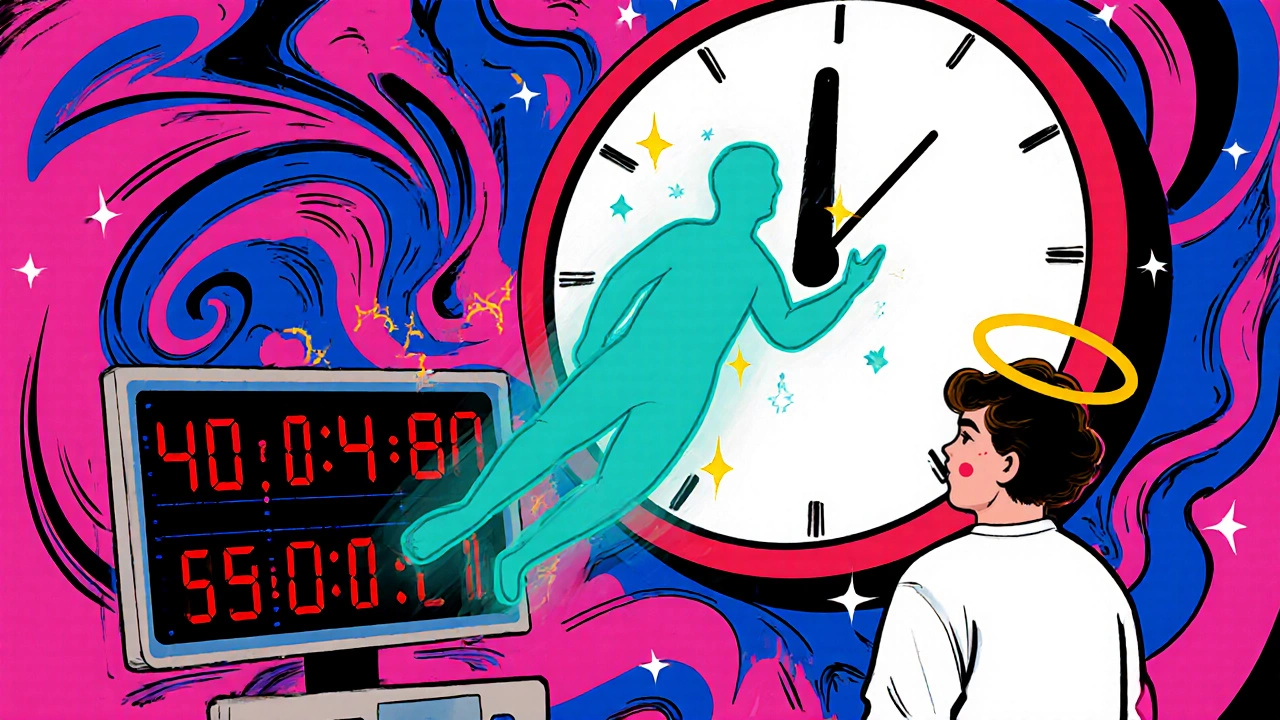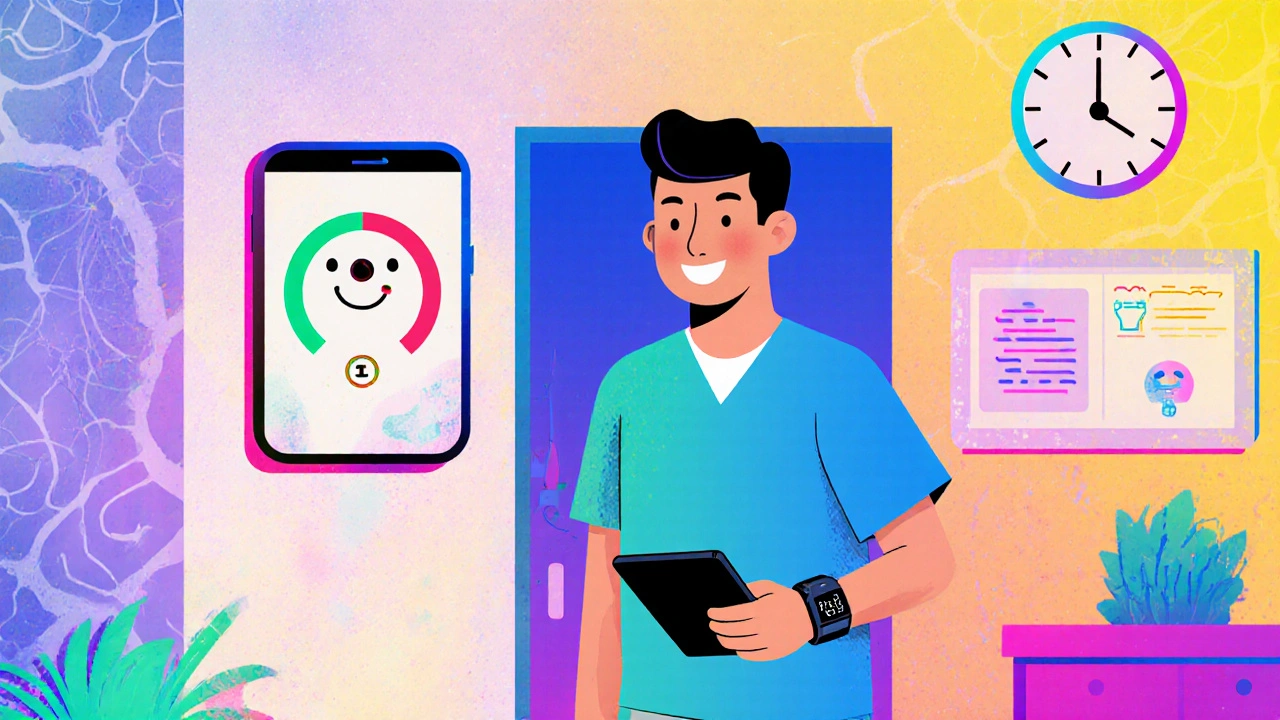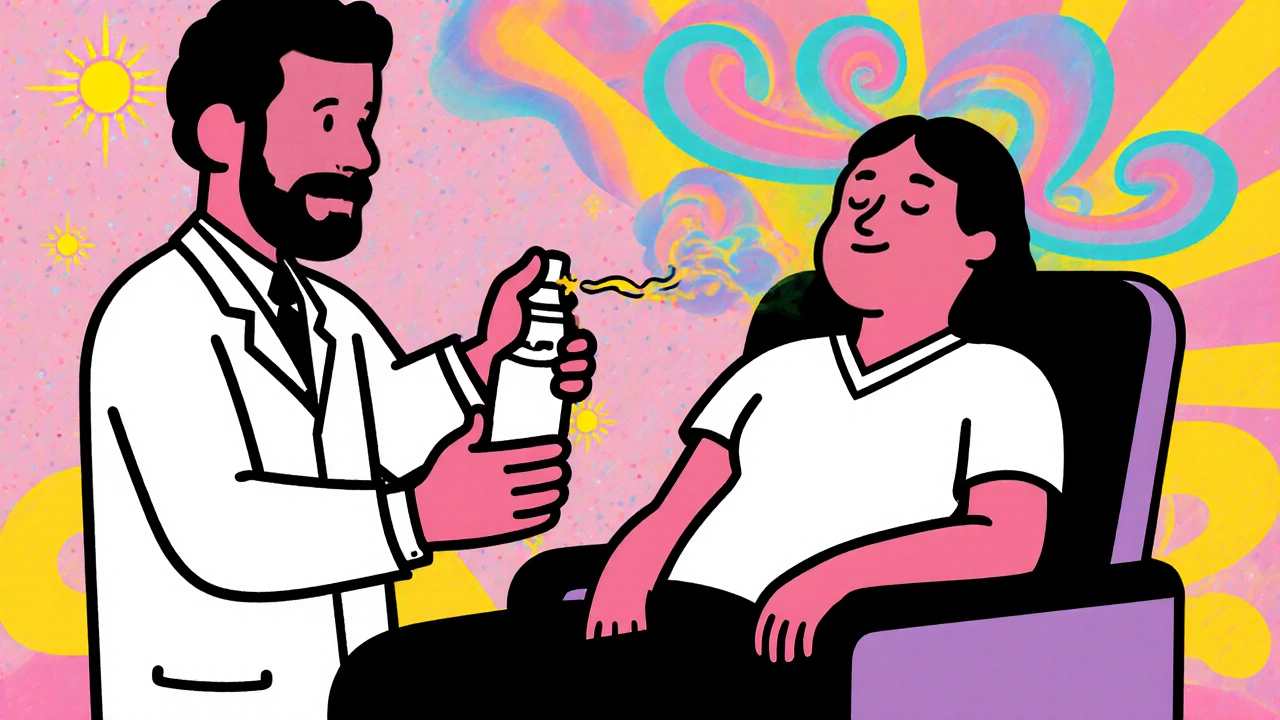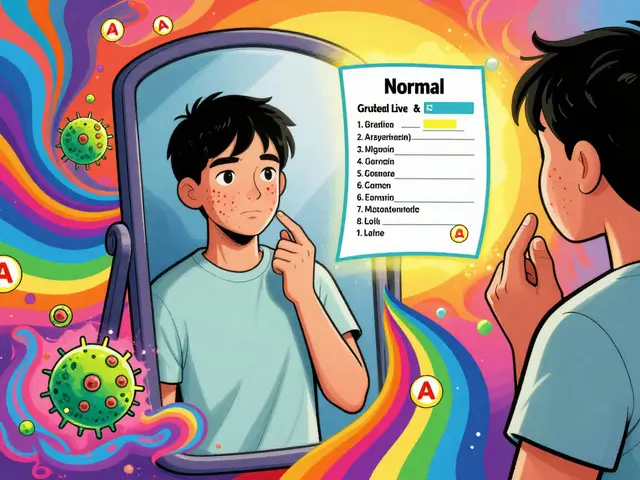Esketamine Monitoring Timeline Calculator
Monitoring Timeline
Track your clinic's required monitoring schedule according to FDA REMS guidelines
Discharge Criteria Checker
Verify if patient meets FDA criteria for discharge
When a patient with treatment‑resistant depression (TRD) finally finds a medication that lifts their mood in hours rather than weeks, the excitement can be huge. Esketamine nasal spray delivers that rapid relief, but it also brings unique safety challenges-most notably dissociation and sharp, short‑lived blood‑pressure spikes. Understanding why these effects happen, how severe they can be, and what the FDA‑mandated monitoring looks like can turn anxiety into confidence for clinicians and patients alike.
What is Esketamine Nasal Spray?
Esketamine nasal spray is a prescription medication sold under the brand name Spravato. It is approved by the U.S. Food and Drug Administration (FDA) for adults with major depressive disorder who have not responded to at least two other antidepressants. Developed by Janssen Pharmaceuticals, a subsidiary of Johnson & Johnson, the drug is delivered as a 28 mg, 56 mg, or 84 mg spray that patients self‑administer in a certified clinic.
How Esketamine Works: The NMDA Connection
The molecule is the S‑enantiomer of ketamine and acts as a non‑competitive antagonist at the NMDA receptor. By blocking the receptor’s PCP binding site, it reduces calcium influx caused by glutamate. This inhibition is strongest on NMDA receptors located on GABA‑ergic interneurons, which leads to a burst of excitatory firing across cortical networks. The result is a rapid surge in synaptic plasticity that translates into fast‑acting antidepressant effects-a mechanism very different from traditional monoamine‑based drugs.
Dissociation: Frequency, Symptoms, and Management
Across the three pivotal phase‑3 trials (TRANSFORM‑1, ‑2, and ‑3), the FDA reported that 56.2% of patients experienced some level of dissociation versus 13.9% on placebo. The peak typically occurs around 40 minutes after dosing and resolves within 1.5-2 hours. Severe dissociation (CADSS score ≥3) was seen in about 6% of participants.
Common sensations include:
- Feeling detached from one’s body or environment
- Altered sense of time (minutes feel like seconds)
- Visual distortions or dream‑like imagery
Because the effect is dose‑dependent, the 84 mg spray produces dissociation in roughly 61% of users, compared with 54% at 56 mg. Management relies on a calm setting, minimal external stimuli, and reassurance that the experience is temporary. In rare cases of severe distress, clinicians may administer a short‑acting benzodiazepine, though this occurs in less than 2% of treatments.

Blood Pressure Spikes: What the Numbers Show
Transient hypertension is another predictable reaction. In pooled trial data, 32.7% of patients had a systolic rise of 14-23 mmHg and a diastolic rise of 7-16 mmHg, usually peaking at the same 40‑minute mark as dissociation. Most elevations are asymptomatic and revert to baseline within two hours. However, individuals with uncontrolled hypertension (systolic >160 mmHg or diastolic >100 mmHg) are excluded from treatment because the spikes can pose cardiovascular risk.
Key monitoring figures:
- Baseline BP measured 5 minutes before administration
- Repeat measurements every 5-10 minutes until the 40‑minute peak
- Final check before discharge at 2 hours post‑dose
Monitoring Protocols Under the REMS Program
The FDA’s Risk Evaluation and Mitigation Strategy (REMS) is the most rigorous safety framework for any antidepressant. Its core requirements include:
- Administration only in a certified health‑care setting.
- Pre‑treatment assessment of vital signs, mental status, and consent to the Patient‑Provider Agreement.
- Direct observation for a minimum of 2 hours after each spray.
- Standardized dissociation assessment using the Clinician‑Administered Dissociative States Scale (CADSS) at the 40‑minute mark.
- Immediate availability of emergency equipment (oxygen, IV lines, benzo rescue).
Most clinics follow a structured timetable, as shown in the table below.
| Time Point | Action | Notes |
|---|---|---|
| ‑5 min | Baseline vitals (BP, HR, O₂ Sat) | Document in patient record |
| 0 min | Administer prescribed dose | Patient self‑sprays under supervision |
| 5‑10 min | First BP check | Watch for rapid rise |
| 15‑20 min | Second BP check | Anticipate peak |
| 30‑40 min | CADSS assessment | Record dissociation severity |
| 60 min | Third BP check & symptom review | Determine if patient is stable |
| 90 min | Optional additional CADSS if earlier score ≥10 | Consider extended monitoring |
| 120 min | Final vitals, discharge decision | Patient must be oriented and BP < 140/90 |

Practical Tips for Clinicians and Patients
Both sides benefit from clear communication:
- Pre‑treatment education: Explain that dissociation feels like a short dream and that BP spikes are temporary. Patients who know what to expect report lower anxiety.
- Environment control: Dim lighting, soft music, and a quiet room reduce overstimulation during the dissociative window.
- Vital‑sign automation: Electronic monitors that flag BP > 150/95 mmHg cut down on manual errors and speed up discharge decisions.
- Follow‑up scheduling: Arrange the next dose after confirming the previous session’s CADSS score was < 10 and BP returned to baseline.
Patients with a history of hypertension should coordinate with their primary care physician to optimize antihypertensive therapy before starting Spravato. If a patient experiences a systolic reading > 170 mmHg despite medication, the clinician should pause treatment and reassess cardiovascular risk.
Future Directions: Personalizing Monitoring
Recent data from the SUSTAIN‑2 trial suggest that a subset of patients-those with stable vitals and low CADSS scores after the first hour-may safely reduce monitoring to 1 hour. The FDA has already approved a protocol amendment to allow such tailored schedules, pending clinic‑level validation.
Digital health startups are also entering the space. Wearable devices that stream real‑time BP and heart‑rate data to the clinic’s EMR can trigger an automatic alert if thresholds are crossed. In parallel, a mobile app that administers a brief self‑report of dissociation (using the Patient Dissociative State Scale) could supplement in‑person CADSS scoring, especially in tele‑health‑enabled Spravato programs.
Despite tech advances, experts agree that the acute physiological effects stem from the drug’s NMDA antagonism, making some level of observation unavoidable. The challenge now is to make that observation less burdensome while keeping safety front‑and‑center.
Key Takeaways
- Esketamine nasal spray provides rapid relief for TRD but reliably produces transient dissociation and BP spikes.
- Incidence peaks at ~40 minutes; most symptoms resolve by 2 hours.
- The FDA‑mandated REMS protocol requires a minimum 2‑hour monitored stay, CADSS assessment, and frequent BP checks.
- Patient education, calm environments, and automated monitoring improve safety and satisfaction.
- Emerging evidence supports shorter monitoring for low‑risk patients and digital tools that could streamline future care.
How long does dissociation usually last after an esketamine dose?
Most patients feel the peak around 40 minutes, and symptoms typically fade within 1.5 to 2 hours. Severe dissociation is rare and resolves quickly with supportive care.
Can I take esketamine at home?
No. The REMS program restricts administration to certified clinics where staff can monitor blood pressure, heart rate, and dissociation for at least two hours.
What should I do if my blood pressure spikes during treatment?
Clinics are required to have emergency medication and equipment on hand. Typically, the spike is short‑lived and resolves on its own; clinicians will monitor until it returns to baseline before discharge.
Is the CADSS the only tool for assessing dissociation?
CADSS is the standard in trials and REMS guidelines, but some clinics also use the Patient Dissociative State Scale (PDSS) or brief self‑report questionnaires for follow‑up visits.
Will the monitoring time ever be reduced to one hour for everyone?
Current data supports a one‑hour protocol only for patients who show stable vitals and low CADSS scores early in treatment. Broad adoption will depend on further studies and FDA guidance.





Casey Morris
October 24, 2025 AT 13:12Thank you for this thorough exposition; the delineation of pharmacodynamics, dissociative metrics, and REMS logistics is, frankly, commendable-yet one cannot overlook the subtle interplay between NMDA antagonism and vascular reactivity, which, in my humble estimation, warrants further contemplation.
Teya Arisa
October 30, 2025 AT 12:39Dear colleagues, I wish to convey my sincere gratitude for the meticulously curated guidance; the inclusion of patient‑centred education, ambient environment considerations, and automation of vital‑sign monitoring reflects exemplary practice standards 😊.
Kester Strahan
November 5, 2025 AT 13:05From a neuropharmacological standpoint, the ketamine‑derived esketamine exhibits rapid‑onset glutamatergic modulation via NR2B‑subunit antagonism, which, as the data shows, precipitates a transient upregulation of BDNF pathways; thsi mechanistic insight clarifies the observed CADSS spikes and underscores the necessity of hemodynamic surveillance.
Doreen Collins
November 11, 2025 AT 13:32While the protocol’s 2‑hour observation window may appear cumbersome, it effectively mitigates acute adverse events, ensuring patient safety without compromising therapeutic momentum.
junior garcia
November 17, 2025 AT 13:59Imagine the relief of a weary soul, suddenly lifted by a single breath of hope, only to be momentarily drenched in a wave of surreal sensation; the clinic becomes a stage where courage meets caution.
Jordan Levine
November 23, 2025 AT 14:25Enough with the poetic fluff! This is real medicine, not a Hollywood script-if you can’t handle a brief BP rise, stay home! 💢💥
Lindy Hadebe
November 29, 2025 AT 14:52The analysis, while thorough, seems to rehash well‑known data without offering novel insight; a deeper dive into genotype‑specific responses would have been more valuable.
Ekeh Lynda
December 5, 2025 AT 15:19The author's emphasis on patient education and ambient control, though commendable, overlooks the systemic burden placed on clinics which must allocate specialized staff and equipment solely to meet REMS mandates a reality that many smaller practices simply cannot accommodate under current healthcare reimbursement models.
Kathryn Rude
December 11, 2025 AT 15:45One might argue that the lofty language masks a simple truth: the drug works, the side effects are transient, and the bureaucracy is overblown ;)
Mary Mundane
December 17, 2025 AT 16:12The critique is noted but misses the mark.